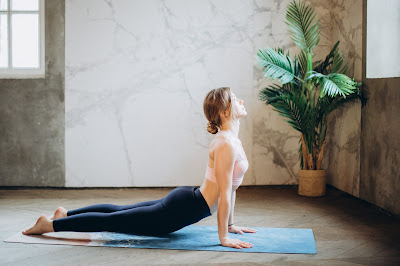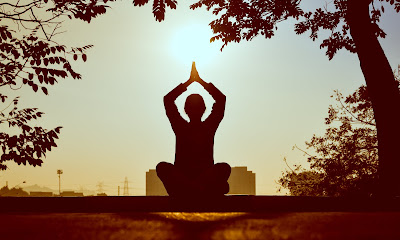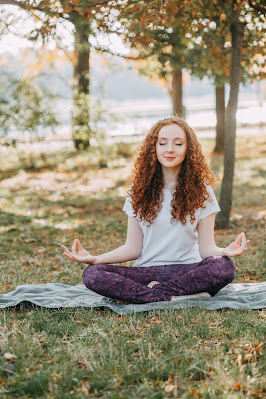 |
Mind and Body Wellness: Incorporating Yoga into Your Daily Routine at Home |
In today's fast-paced world, where stress and anxiety have become commonplace, maintaining a balance between mind and body wellness is crucial. Embracing holistic practices like yoga offers a pathway to achieve this equilibrium. This article aims to guide individuals on incorporating yoga into their daily routines at home, exploring its numerous benefits for mental and physical health.
I. Introduction to Mind and Body Wellness
In a society that often prioritizes physical health over mental well-being, the concept of holistic health emphasizes the importance of nurturing both aspects equally. Achieving a state of complete wellness involves harmonizing the mind, body, and spirit.
II. Understanding Yoga as a Wellness Practice
Yoga, originating from ancient India, is a holistic discipline that unites the mind and body. It involves a combination of physical postures (asanas), breathing exercises (pranayama), and meditation, promoting flexibility, strength, and mental clarity.
III. Establishing a Daily Routine
Creating a dedicated space for yoga practice at home fosters consistency. Designating a specific time for yoga helps in establishing a routine, making it easier to incorporate into daily life.
IV. Yoga Poses for Daily Practice
For beginners, simple poses like Mountain Pose (Tadasana) and Child's Pose (Balasana) introduce the fundamentals. Progressing to intermediate and advanced poses such as Warrior Pose (Virabhadrasana) and Shoulder Stand (Sarvangasana) challenges the body further.
V. Mindfulness and Meditation Techniques
Integrating mindfulness into yoga enhances its benefits. Practicing meditation alongside yoga cultivates mental calmness, reducing stress and improving focus.
VI. Enhancing Wellness Through Breathwork
Controlled breathing exercises in yoga, known as pranayama, offer immense benefits. Techniques like Alternate Nostril Breathing (Nadi Shodhana) and Ujjayi breathing aid in relaxation and energizing the body.
VII. Tips for Sustaining a Yoga Routine
Consistency can be challenging, but overcoming obstacles by setting realistic goals and staying motivated helps in maintaining a regular yoga practice. Making yoga an enjoyable part of the day encourages continuity.
VIII. Measuring Progress and Benefits
Tracking improvements in flexibility, strength, and mental well-being provides motivation to continue the practice. Recognizing the positive impact of yoga on overall wellness encourages dedication.
VI. Enhancing Wellness Through Breathwork
In the practice of yoga, breath control, or pranayama, holds a significant place. It involves various breathing exercises that go beyond simple inhalation and exhalation. These techniques are designed to regulate the breath, enhance mindfulness, and influence the flow of prana (life force energy) throughout the body.
One such powerful technique is the "Ujjayi breath," also known as the "Victorious Breath" or "Ocean Breath." It involves gently contracting the back of the throat to create a soft hissing sound during both inhalation and exhalation. This technique helps to calm the mind, warm the body, and deepen concentration during yoga practice.
Another effective breathing exercise is "Alternate Nostril Breathing" or "Nadi Shodhana." This technique involves using the thumb and ring finger to alternate nostrils while inhaling and exhaling, aiming to balance the flow of energy in the body. It aids in reducing stress, calming the nervous system, and enhancing mental clarity.
VII. Tips for Sustaining a Yoga Routine
Maintaining a consistent yoga practice at home requires dedication and motivation. Here are some practical tips to help sustain a daily routine:
a. Set Realistic Goals
Establish achievable goals based on your current fitness level and schedule. Start with shorter sessions and gradually increase duration and intensity as you progress.
b. Create a Welcoming Space
Designate a peaceful corner or room in your home for yoga practice. Keep it clutter-free, add soothing elements like candles or plants, and ensure adequate ventilation for a refreshing experience.
c. Experiment with Different Styles
Explore various yoga styles to find what resonates with you. Whether it's Hatha, Vinyasa, Yin, or Restorative yoga, finding a style that suits your preferences will make the practice enjoyable.
d. Practice Mindfulness Beyond Yoga
Extend mindfulness into your daily activities. Be present and fully engaged in whatever you do, whether it's eating, walking, or working. This cultivates an overall sense of awareness and tranquility.
e. Find Joy in the Practice
Approach your yoga sessions with a positive mindset. Enjoy the process of connecting with your body and breath. Celebrate each small achievement, fostering a sense of accomplishment.
IX. Measuring Progress and Benefits
Tracking your progress in yoga goes beyond physical changes. Besides noticing improvements in flexibility, strength, and balance, pay attention to how you feel mentally and emotionally. A more peaceful state of mind, increased self-awareness, and better stress management are some subtle yet powerful benefits of regular yoga practice.
Conclusion
Incorporating yoga into your daily routine offers a holistic approach to wellness, benefiting both the mind and body. By embracing this ancient practice, individuals can attain a state of balance, promoting physical health



